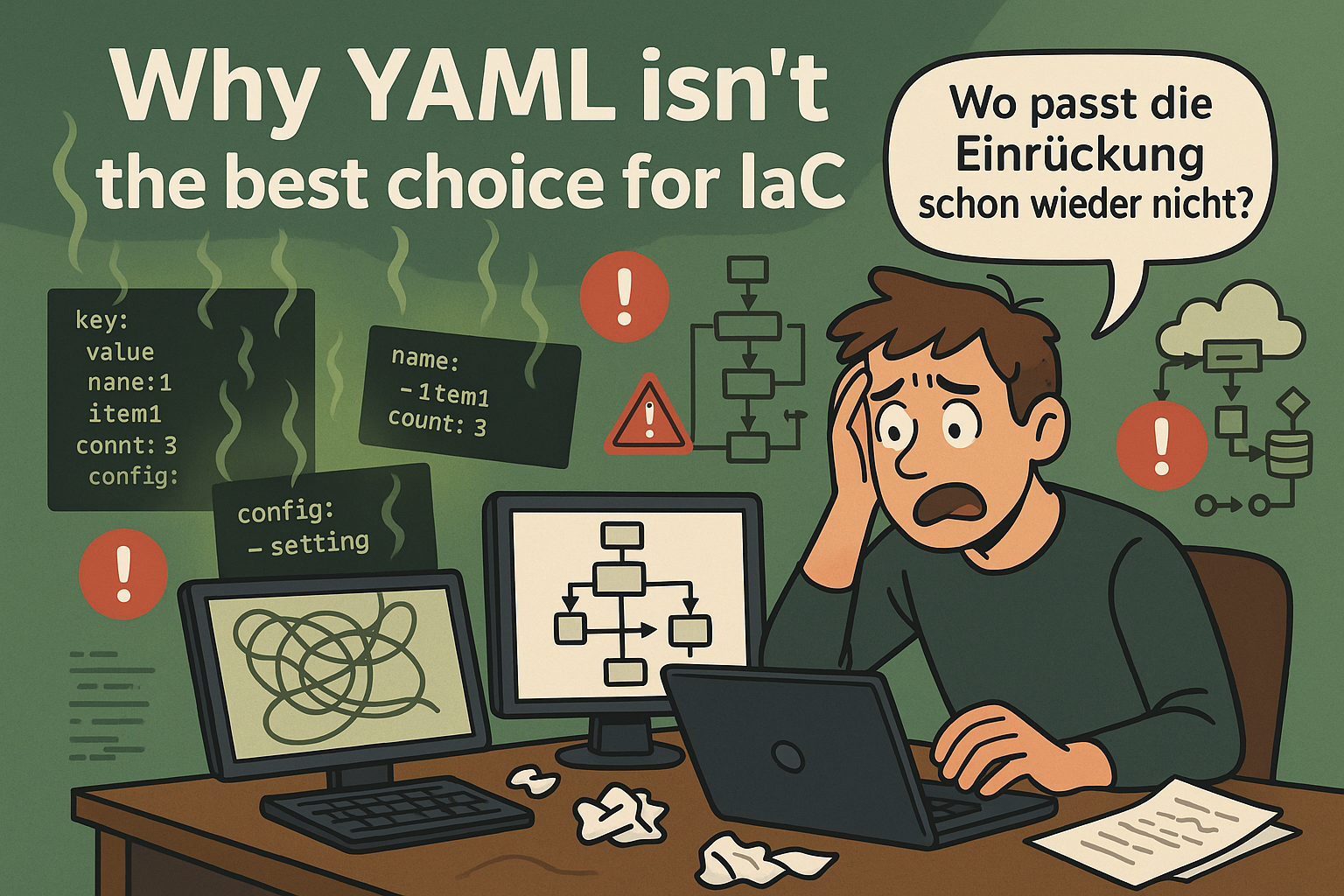Why YAML is not the Solution for Infrastructure as Code
Infrastructure as Code (IaC) has become an indispensable part of modern IT infrastructures. Tools like Ansible, Kubernetes, and CloudFormation often rely on YAML – a format that initially impresses with its readability.
But upon closer inspection, it becomes clear: YAML is often more of a hindrance than a help in complex infrastructure projects. (Wikipedia, 2025) That’s because YAML is not a programming language – it’s a text-based data serialization format.

YAML: Readable but Error-Prone
YAML was developed to make configuration files human-readable. However, this readability brings challenges: (Wikipedia, 2025)
- Lack of type safety: YAML automatically interprets data, which can lead to unexpected results.
For example,
yesis interpreted as the Booleantrue, which can be problematic in certain contexts. (Wikipedia, 2025) - Difficult error diagnosis: A misplaced indent or missing space can cause hard-to-detect errors. Anyone who’s ever had to debug layered Helm charts knows what we're talking about.
- Limited expressiveness: YAML works well for simple configurations but quickly reaches its limits with complex logic or dependencies.
Infrastructure as Code Requires More than Configuration
IaC is not just about configuring infrastructure – it’s about treating infrastructure like software: versionable, testable, and modular. This requires programming languages that support these needs.
- Modularity and reusability: Programming languages allow the creation of modules and functions that can be reused.
- Testability: Real programming languages support unit tests to validate infrastructure in advance.
- Scalability: Complex infrastructures can be better modelled and managed using programming languages.
In short, YAML still requires an underlying program to support and execute its configurations – so it makes more sense for infrastructure to interact directly with that framework, taking full advantage of language servers and debugging tools.
Practical Alternatives to YAML
There are already tools that follow these principles:
- Pulumi: Allows infrastructure to be defined using languages like TypeScript, Python, or Go. (Spectral, 2022)
- AWS CDK: Provides an object-oriented abstraction over CloudFormation, written in languages like TypeScript or Python. (Serverless First, 2022)
- Terraform with HCL: While not Turing-complete, it has clear syntax and better error handling than YAML.
None of these frameworks fully meet our requirements, which is why we work with our own tooling. At our company, every piece of infrastructure is available as code – not just as structured data descriptions.
Conclusion: YAML Isn't Enough for Sustainable Infrastructure
YAML may suffice for simple configurations, but it's not the best choice for robust, scalable, and maintainable infrastructures. The future of IaC lies in real programming languages that bring software development principles to infrastructure. (Computer Weekly, 2020)
At RiKuWe, we rely on these modern approaches to provide our customers with stable and future-proof infrastructure solutions.
References
- Wikipedia (2025). YAML Retrieved on 01.06.2025 from YAML
- Spectral (2022). Top 10 Infrastructure as Code (IaC) Tools to Know in 2024 - Spectral Retrieved on 01.06.2025 from Tools to know
- Serverless First (2022). Infrastructure-from-Code vs Infrastructure-as-Code - Serverless First. Retrieved on 01.06.2025 from IfC vs. IaC
- Computer Weekly (2020). Infrastructure as Code: Vor- und Nachteile im Überblick Retrieved on 01.06.2025 from IaC: Vor- und Nachteile
